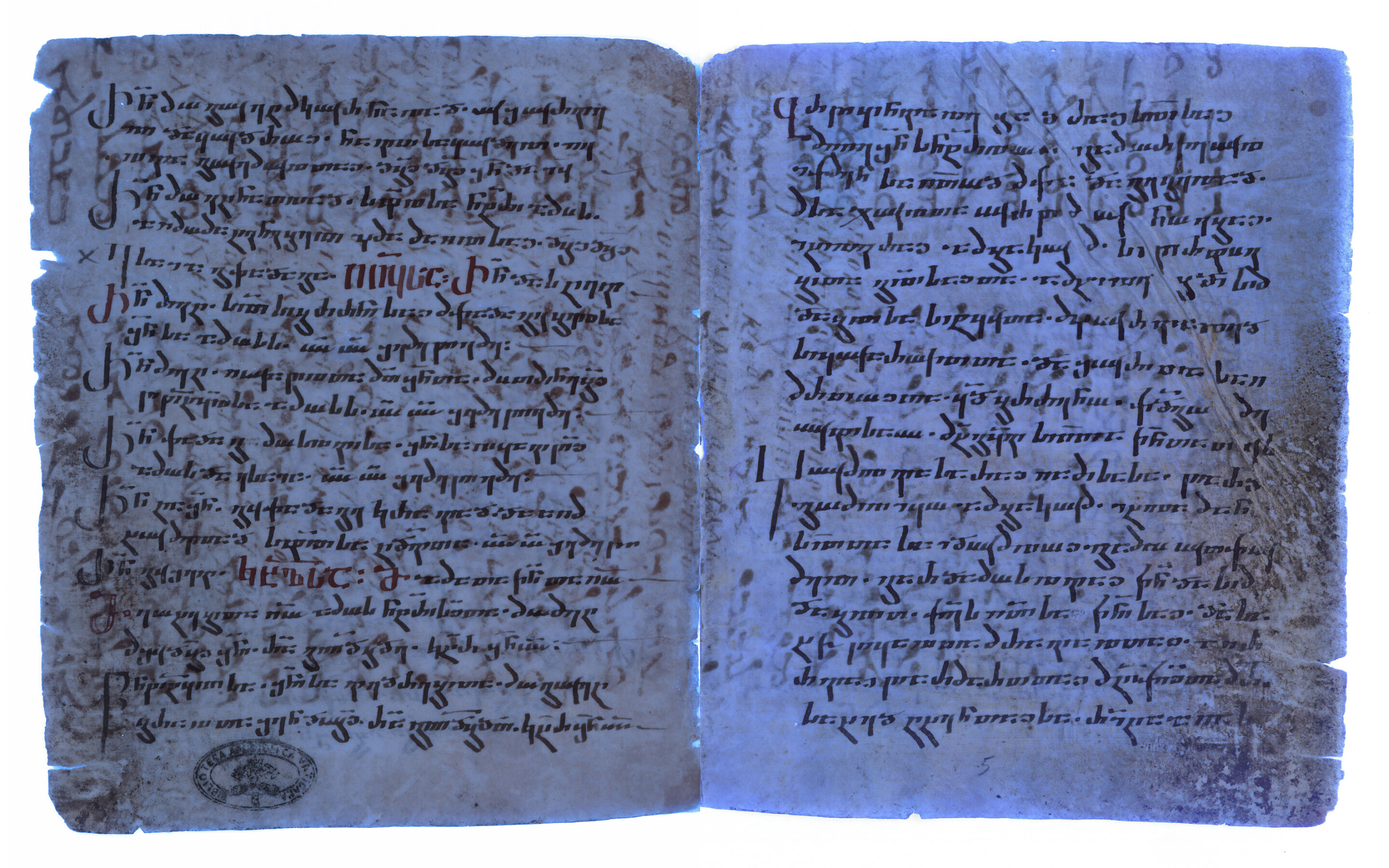The Bible has been rewritten multiple times throughout history but exact count isn’t available. The Bible, regarded as a sacred text by millions, has undergone numerous revisions and translations over time.
With its origins dating back thousands of years, it is challenging to determine an exact number of times the Bible has been rewritten. Nevertheless, it is clear that the Bible has experienced numerous changes as it has been translated into various languages and revised to accommodate cultural, linguistic, and historical contexts.
These revisions have aimed to ensure that the message of the Bible remains accessible and relevant to different generations. We will explore the transformations and translations that the Bible has undergone throughout its rich history.
The History Of The Bible
The Bible has been rewritten numerous times throughout history, with multiple translations and revisions made to ensure the accuracy and relevance of its content.
From Oral Tradition To Written Texts
The history of the Bible can be traced back thousands of years, with its origins rooted in oral tradition. Before being written down, the sacred texts of the Bible were passed down from generation to generation through spoken word. This practice allowed the stories, teachings, and prophetic messages to be shared and preserved among the ancient Israelites. Over time, however, the need for a standardized written version of the Bible became evident.
In order to ensure accuracy and longevity, the process of transcription and translation began. Transcribing the Bible involved meticulously copying the original texts onto new scrolls or manuscripts. This task was taken on by scribes, who dedicated themselves to preserving the sacred word. The process of transcription was not without its challenges, as it required great attention to detail and a steady hand. Even the slightest error could have significant ramifications, potentially altering the meaning of the text.
The Process Of Translation And Transcription
As the Bible was passed down through the generations, translation became necessary to make the sacred texts accessible to different cultures and languages. The first major translation of the Bible occurred when the Hebrew Scriptures were translated into Greek, resulting in the Septuagint. This translation allowed the teachings of the Hebrew Bible to reach a broader audience and laid the foundation for future translations.
In addition to translation, transcription played a crucial role in the preservation of the Bible. Over time, the original manuscripts of the Bible deteriorated, and as a result, numerous copies were made. These copies were transcribed by hand, with each scribe striving to produce an accurate representation of the original text.
The process of transcription and translation continued throughout history as the Bible spread to different regions and cultures. Countless scribes and scholars dedicated their lives to preserving and accurately transmitting the sacred words of the Bible. As a result, the Bible exists today in numerous translations and variations, each reflecting the cultural and linguistic differences of the time and place in which it was translated.

Credit: www.amazon.com
The Evolution Of The Bible
The Bible, undoubtedly one of the most influential books of all time, has a long and fascinating history. Over the centuries, it has undergone numerous changes, translations, and rewritings, shaping its present-day form. In this blog post, we will explore the evolution of the Bible, diving into the adaptations and transitions it has undergone throughout its rich history.
The Old Testament: Manuscripts And Versions
The Old Testament, also known as the Hebrew Bible, is a compilation of sacred texts tracing back thousands of years. As ancient as its origins are, the preservation and transmission of these texts have been a remarkable feat.
Manuscripts, handwritten copies of the texts, were crucial to the preservation of the Old Testament. These manuscripts were created by scribes who meticulously copied the texts, ensuring their accuracy. However, as time passed, errors and variations inevitably crept in.
As a result, different versions of the Old Testament emerged. These versions can be broadly classified into three major categories: the Masoretic Text, the Septuagint, and the Dead Sea Scrolls. The Masoretic Text, compiled by Jewish scholars known as the Masoretes, is the most widely accepted version among Jewish communities today. The Septuagint, a Greek translation of the Hebrew Bible, was highly regarded in the Hellenistic period. The Dead Sea Scrolls, discovered in caves near the Dead Sea in the mid-20th century, provided much insight into ancient Jewish practices and included previously unknown versions of Old Testament texts.
Despite the variations, the Old Testament’s core teachings and stories have remained remarkably consistent throughout these different versions.
The New Testament: From Originals To Translations
The New Testament, which focuses on the life and teachings of Jesus Christ and the early Christian Church, has its own story of evolution. Originally written in Greek, the New Testament underwent a series of translations that brought its message to a wider audience.
At the heart of the New Testament’s evolution lies the process of translating the original Greek texts into various languages. One of the earliest and most significant translations is the Latin Vulgate, commissioned by St. Jerome in the 4th century. This translation played a crucial role in spreading the Christian faith throughout the Roman Empire.
| Translation | Language |
|---|---|
| Latin Vulgate | Latin |
| King James Version | English |
| Luther Bible | German |
| Russian Synodal Version | Russian |
The Latin Vulgate served as the standard version for the Western Church for centuries until the Reformation period when translations into vernacular languages became more prevalent. The King James Version, translated into English in the 17th century, is one of the most widely recognized and influential English translations. Similarly, the Luther Bible, translated by Martin Luther, revolutionized the German-speaking world. Other translations, like the Russian Synodal Version, have played key roles in shaping various Christian communities.
Each translation of the New Testament offers its unique perspective, emphasizing different nuances and cultural contexts while striving to convey the essence of the original Greek texts.
Changes And Edits Throughout History
Throughout history, the Bible has been rewritten multiple times, undergoing changes and edits to reflect evolving languages, cultures, and interpretations. These revisions ensure its continued relevance and accessibility to readers.
Early Scribal Practices
In the early days of the Bible, copies were made by hand, and there was no standardized method for transcription. Scribes meticulously copied texts, which resulted in numerous variations due to human error, intentional changes, or accidental mistakes. These early scribes were tasked with the important responsibility of preserving and transcribing the Word of God, but their work was not always flawless. Thus, it is important to recognize the potential for errors and differences that may arise from these early scribal practices.King James Version And Other Key Translations
One of the most influential and widely recognized translations of the Bible is the King James Version (KJV). Commissioned in 1604, the KJV was intended to provide a definitive and authoritative English translation. The process involved scholars examining various manuscripts and sources available at the time to create a new and improved version. However, even with this effort, there were still limitations, such as the availability and accessibility of accurate source materials. Throughout history, other key translations emerged, aiming to accurately represent the original texts while accommodating linguistic changes and modern interpretations.Modern Scholarly Efforts To Reconstruct Original Texts
In an effort to reconstruct the original texts of the Bible, modern scholars have employed various scholarly tools and techniques. These include comparing different ancient manuscripts, analyzing language and cultural context, and applying textual criticism to identify and rectify any errors or discrepancies. By using these methods, scholars strive to approximate the original writings and develop translations that align more closely with the intended meaning. Their continuous efforts provide valuable insights into the historical context and ensure the reliability of the Scriptures. To summarize, the Bible has undergone numerous changes and edits throughout history. Early scribal practices left room for errors and variations, while subsequent translations like the KJV aimed to improve accuracy. Today, modern scholars work diligently to reconstruct the original texts, allowing us to gain a deeper understanding of the Bible’s message.Controversies Surrounding Biblical Changes
Throughout history, the Bible has been rewritten numerous times, leading to controversies and debates among scholars and religious communities. These revisions have sparked discussions concerning the theological implications of variations and accusations of bias and manipulation. Let’s explore these controversies surrounding biblical changes.
Theological Implications Of Variations
The existence of multiple versions and variations of the Bible raises important theological questions. Scholars and theologians engage in extensive debates about how these changes affect the interpretation and understanding of religious texts. Some argue that variations, such as discrepancies in word choices or differences in phrasing, can alter the meaning of biblical passages. This highlights the need for careful consideration and analysis of the historical context and intended message of the original texts.
Accusations Of Bias And Manipulation
Due to the human involvement in biblical translations and revisions, accusations of bias and manipulation have emerged. Critics claim that certain changes were made intentionally to align the text with particular religious or political agendas. These allegations further emphasize the importance of understanding the motivations and influences behind each revision of the Bible.
The Significance Of Scripture Evolution
Understanding the evolution of the Bible is paramount to comprehending its rich historical and cultural context. Over centuries, the Bible has undergone multiple rewrites, leading to its present-day form. This article explores two crucial aspects of scripture evolution: understanding context and interpretation, as well as the impact on religious practices and beliefs.
Understanding Context And Interpretation
One of the key factors behind the Bible’s numerous rewrites is the need to ensure proper understanding and interpretation of its sacred text. As society progresses, so does our understanding of language, culture, and historical events. Biblical scribes and scholars throughout history endeavored to bridge the gap between ancient times and present-day readers.
By revising and updating the text, they aimed to clarify ambiguous passages, make archaic references more accessible, and present a contemporary understanding of God’s message. This evolution allows the scriptures to remain relevant and relatable to readers across different eras.
Impact On Religious Practices And Beliefs
The evolution of the Bible’s text has had a profound impact on religious practices and beliefs. As the holy book evolves, so too do its teachings and the interpretations derived from them. These changes often shape religious doctrines, rituals, and moral guidelines followed by believers.
For example, as certain cultural practices become outdated or condemned, revisions in the Bible may occur to reflect the evolving values of society. Such adaptations have allowed religious communities to address and reconcile their beliefs with changing social norms without straying from the core principles of their faith.
Additionally, as scholars uncover new historical information and linguistic understandings, the Bible’s interpretations can shift. This continual process of interpretation means that religious practices may evolve over time to reflect updated understandings of scripture, ensuring that faith remains dynamic and relevant in an ever-changing world.

Credit: www.visualcapitalist.com

Credit: phys.org
Frequently Asked Questions Of How Many Times Have The Bible Been Rewritten
How Many Times Has The Bible Been Rewritten?
The Bible has been translated and revised multiple times throughout history to ensure accuracy and readability. It has undergone numerous translations from the original Hebrew, Aramaic, and Greek texts to various languages, including English. These translations aim to capture the essence and meaning of the original texts while adapting to different cultures and linguistic nuances.
Why Has The Bible Been Rewritten So Many Times?
The rewriting of the Bible is necessary to maintain its relevance and accessibility to different generations and cultures. As language evolves, new translations are needed to ensure that the message remains clear and understandable. Additionally, ongoing archaeological discoveries and advancements in biblical scholarship contribute to the need for updates and revisions to enhance accuracy.
Did The Rewriting Of The Bible Alter Its Original Message?
Although translations and revisions have occurred, the central message and teachings of the Bible remain intact. The goal of rewriting is to accurately convey the original intent and meaning of the texts, while adapting them to the recipient culture and language.
Scholars and translators work diligently to preserve the core values and teachings of the Bible, ensuring its message endures through different iterations.
Are The Rewritten Versions Of The Bible Reliable?
Translations and revisions of the Bible undergo rigorous scholarly processes to ensure accuracy and reliability. Biblical scholars work with ancient manuscripts, comparing different versions to reconstruct the original texts as accurately as possible. However, it is important to note that translations may vary slightly due to linguistic nuances and interpretation, but overall, the rewritten versions of the Bible maintain fidelity to the original message.
Conclusion
It is clear that the Bible has undergone numerous revisions throughout its long history. These rewriting efforts have aimed to ensure accuracy, preserve authenticity, and adapt to changing languages and cultural contexts. While some may view these changes skeptically, it’s important to appreciate the ongoing dedication to maintain the integrity of the biblical text.
Ultimately, understanding the process of Bible rewriting can deepen our appreciation for its rich and complex tapestry of words.
- The Power of Mobile Accessibility And Real-Time Tracking for Trucking Operations - November 6, 2024
- Why Ease of Use is Crucial in Trucking Dispatch Software - September 22, 2024
- Better Communication With Dispatchers: How Trucking Dispatch Software Can Optimize Operations - September 7, 2024



